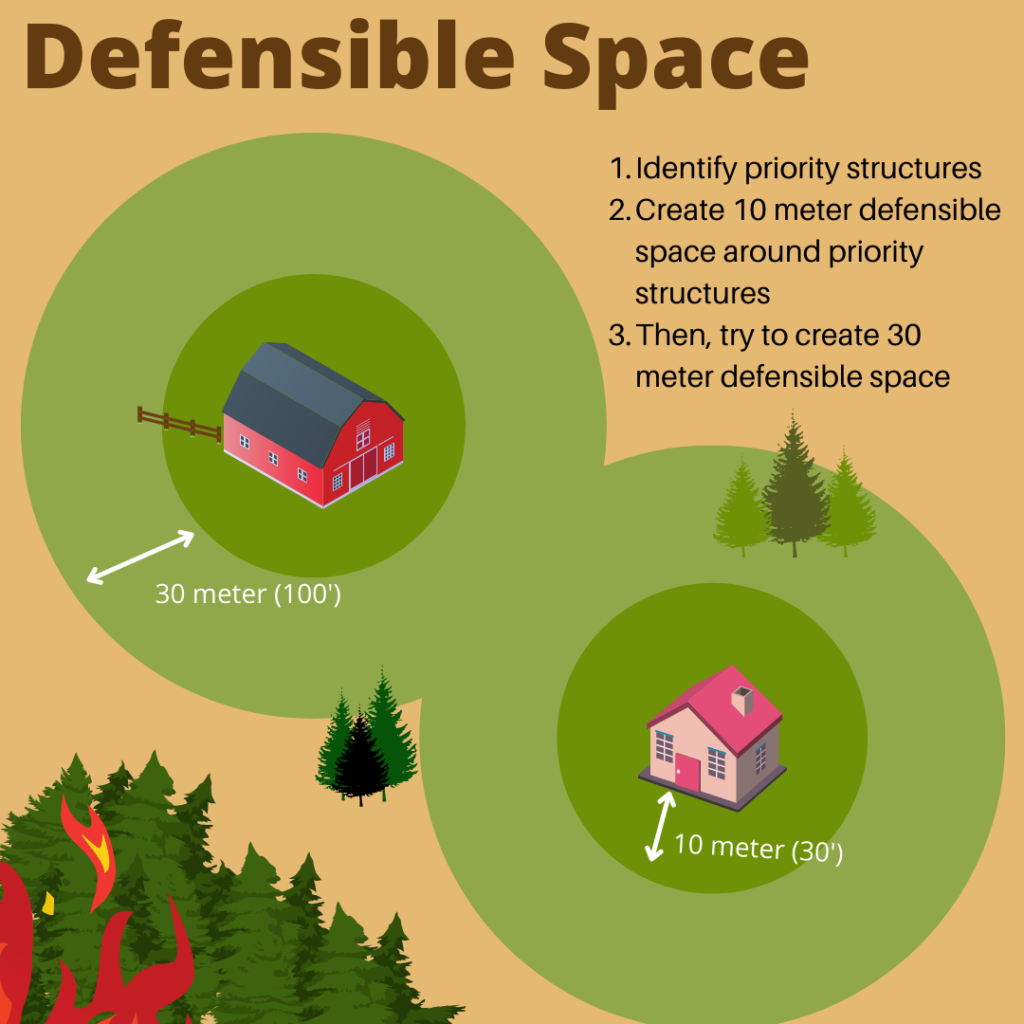The worsening fire season in British Columbia creates many challenges for farms and ranches. Given the current State of Emergency declared by the BC government and the prospect of possibly facing mass evacuations in the interior, it is important to share helpful resources and information. Though a lot of fire mitigation needs to be done before the start of fire season, there is much that can still be done now to protect properties and the people and animals that live on them.
The Climate & Agriculture Initiative (CAI) of BC supplies a well of resources for farmers and ranchers to help them protect their operations.
Know the types of ignition
In general, there are three types of ignition:
- Ember Ignition
- Radiant Heat
- Direct Flame
Ember ignition happens when embers from a nearby fire land on flammable material and catch fire. The best way to mitigate this is to find and eliminate ember traps on your property. Ember traps include:
- Dry, built up vegetation
- Dry Grass
- Sawdust or wood shavings
- Cardboard boxes
- Or other buildups of flammable material
If dry grass catches near garbage piles, it can easily light the garbage on fire and spread to buidlings.
Radiant heat and direct flame require fuel pathways. An example could be a barn catching fire from direct flame from a tree, and the fire moving along a fence line to another structure.
Actions you can take
- Get updates from the SLRD here to keep you immediately informed about the situation in our area.
- Remove any possible ember traps from your property; rake, pile, and water dry vegetation.
- Weedwack and mow around your property to reduce the ease of fire spreading through grass.
- Glean your roof and gutters of debris.
- Identify which structures on your property are the most important to protect (priority structures).
- Create first a 10 meter definable area around priority structures, then a 30 meter defensible area. (see the infographic below)
- Hang plastic over openings to barns, porches, etc.
- Ideally, create a 1.5 meter non-combustible surface around priority structures (i.e. gravel, concrete)
- Mark waterlines.
- Create a wildfire evacuation plan.
- If you must evacuate, leave gates open. This serves two purposes: it reduces the risk of fires spreading along a fence line (if you have a wooden fence/gate) and it allows your animals to escape.

Resources
The CAI provides a great resource for wildfire preparedness specifically for Farmers and Ranchers.
A fillable pdf with which you can plan how best to take care of your facility in the event of a wildfire. The workbook was developed by the CAI with the help of producers across the province to help farmers and ranches deal with the unique challenges they face with regards to wildfires.
Watch the CAI video about the workbook.
- Creating an operations map
Part of the Wildfire plan workbook includes creating a map of your operation. Such a map helps share key information quickly and effectively with first responders.
This video will help you understand how best to do this.
- Reduce threat to farm assets video
Other resources can be found on the BC Fire Smart website https://firesmartbc.ca/

